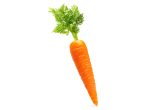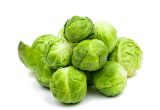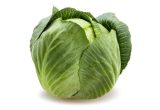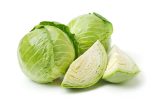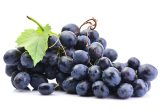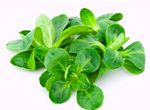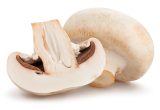Salsify

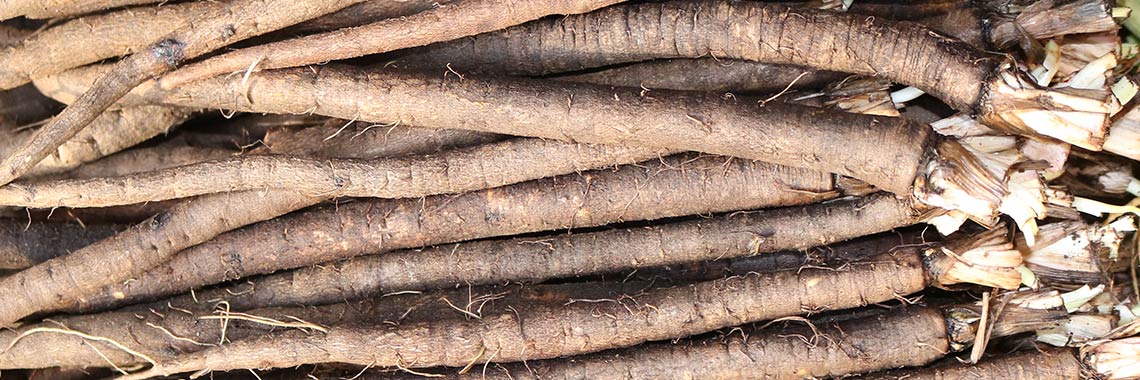
Description
- Salsify (Tragopogon porrifolius or Scorzonera hispanica) belongs to the Asteraceae family.
- This plant is widespread in Europe, in the south of Italy and in the north of Asia (Warashina, 1991; Formisano, 2010).
- All its parts are edible (Formisano, 2010).
PHYSICAL AND ORGANOLEPTIC CHARACTERISTICS
- An analysis of the aerial parts revealed the presence of 38 volatile constituents, the main ones being carbonyl compounds (24.6%), phenols (21.5%), fatty acids and esters (19.7%) (Formisano, 2010).
- The most abundant molecules are organic compounds: 4-vinyl guaiacol (19%), hexahydrofarnesylacetone (15.8%), a saturated fatty acid: hexadecanoic or palmitic acid (17.9%), and an alkane: hentriacontin (10.7%) (Formisano, 2010).
- Black salsify (Scorzonera hispanica) has dark brown-black inedible skin (Lucian, 2017).
COMPOSITION CHARACTERISTICS (excluding macronutrients, vitamins and minerals)
- Phytochemical analysis of salsify revealed the presence of 3 bibenzyl derivatives: 5,4′-dihydroxy-3-alpha-1-rhamnopyranosyl-(1-3)-beta-d-xylopyranosyloxybibenzyl, 2-carboxyl-3,4′-dihydroxy-5-beta-d-xylopyranosyloxybibenzyl tragonoponic acid (2’carboxyl-3′,5′,4″-trihydroxyphenylethanone) and 3 dihydroisocoumarin derivatives, including 6-O-methylscorzocreticoside (Zidorn, 2005).
- Analysis of salsify roots also identified 18 triterpenoid saponins, called tragoponsaponins A to R (Warashina, 1991).
- Salsify leaves contain polyphenols, with a majority of flavonoids, giving it antioxidant properties (AI-Rimawi, 2016; Giambanelli, 2018; Eruygur, 2019).
- A total of 19 flavonoids have been isolated from the whole salsify plant (aerial part and root), including mainly catechin, and other flavonoids such as luteolin, apigenin, quercetin, iso-orientin, vitexin, orientin and rutin (Abdalla, 2020).
- The 3 most abundant compounds in salsify leaves are 4H-Pyran-4-one, 2,3-dihydro-3,5-dihydroxy-6-methyl (antioxidant), isosorbide (compound with diuretic properties) and 2-Methoxy-4-vinylphenol (aromatic compound). They could be responsible for the biological antimicrobial, anti-diabetic and anti-cancer activities observed (Eruygur, 2019).
- In addition, a preliminary study on cells has suggested an anti-cancer effect of salsify (AI-Rimawi, 2016).
- The consumption of black salsify (Scorzonera hispanica) is recommended in cases of diabetes as it contains polysaccharide insulin (Lucian, 2017). Its aerial part contains polyphenols including phenolic acids and flavonoids and its root contains phenolic acids (Vergun, 2018). Its leaves contain carotenoids and chlorophyll, which are also responsible for its antioxidant and protective properties (Ciupak, 2019).
RAW
The following values are approximate and depend on variety, season, ripeness, cultivation conditions, etc.
In the Ciqual table, energy values are calculated from the contents of lipids, proteins, carbohydrates, dietary fibres, polyols, organic acids and ethanol, each with a specific energy value.
As raw salsify is a food in which the presence of polyols and/or organic acids is suspected, Ciqual does not have compositional data to quantify them, so no energy value has been calculated.
For each nutrient, the tables provide information on the content, the minimum and maximum values, as well as the percentage of Dietary Reference Values (DRVs) for 100 g net of raw black salsify.
MACRONUTRIENTS
| Constituent (g) | Average content |
Min-Max per 100g |
DRV% |
|---|---|---|---|
| Water | 77 | - | - |
| Fibers | 3,30 | - | - |
| Carbohydrates | 15,30 | - | 5,88 |
| Sugars | - | - | - |
| Lipids | 0,30 | 0,20 - 0,40 | 0,43 |
| Saturated fat | < 0,10 | - | - |
| Protein | 3,13 | NC - 3,30 | 6,26 |
| Constituent (g) | Amount | Min-Max | DRV% |
|---|---|---|---|
| Water | Ciqual 2020 | - | - |
| Fibers | Ciqual 2020 | - | - |
| Carbohydrates | Ciqual 2020 | - | Règlement (UE) N°1169/2011 du parlement Européen, et du conseil du 25 octobre 2011 |
| Sugars | Ciqual 2020 | - | Règlement (UE) N°1169/2011 du parlement Européen, et du conseil du 25 octobre 2011 |
| Lipids | Ciqual 2020 | - | Règlement (UE) N°1169/2011 du parlement Européen, et du conseil du 25 octobre 2011 |
| Saturated fat | Ciqual 2020 | - | Règlement (UE) N°1169/2011 du parlement Européen, et du conseil du 25 octobre 2011 |
| Protein | Ciqual 2020 | - | Règlement (UE) N°1169/2011 du parlement Européen, et du conseil du 25 octobre 2011 |
Zoom on carbohydrates
- The energy in raw salsify comes mainly from its carbohydrates, with a content of 15.30 g per 100 g.
- This amount is much higher than the average carbohydrate quantity in raw vegetables: about 4.45 g per 100 g.
Zoom on fibres
- Raw salsify is a source of fibre* as it provides 3.30 g per 100 g (i.e. over 3 g per 100 g).
- This amount of fibre is higher than the average quantity found in raw vegetables (2.43 g per 100 g).
Zoom on proteins
- The amount of protein in raw salsify (3.13 g per 100 g) is higher than the average quantity found in raw vegetables (1.87 g per 100 g).
Zoom on lipids
- The amount of fat in raw salsify (0.3 g per 100 g) is lower than the average quantity in raw vegetables (0.56 g per 100 g).
* Regulation (EC) No 1924/2006 of the European Parliament and of the Council of 20 December 2006 on nutrition and health claims made on foods.
MINERALS AND TRACE ELEMENTS
| Constituent | Average content |
Min-Max per 100g |
DRV% |
|---|---|---|---|
| Calcium (mg) | 24,10 | 21,20 - 27,10 | 3,01 |
| Chloride (mg) | - | - | - |
| Copper (mg) | 0,12 | - | 12 |
| Iron (mg) | 0,70 | 0,45 - 1 | 5 |
| Iodine (µg) | 0,20 | 0,15 - 0,25 | 0,13 |
| Magnesium (mg) | 32,10 | 30 - 35,90 | 8,56 |
| Manganese (mg) | - | - | - |
| Phosphorus (mg) | 94 | 63,20 - 133 | 13,43 |
| Potassium (mg) | 387 | 315 - 474 | 19,35 |
| Selenium (µg) | - | - | - |
| Sodium (mg) | 4,50 | 1,80 - 8,90 | - |
| Zinc (mg) | - | - | - |
| Constituent | Amount | Min-Max | DRV% |
|---|---|---|---|
| Calcium (mg) | Ciqual 2020 | - | Règlement (UE) N°1169/2011 du parlement Européen, et du conseil du 25 octobre 2011 |
| Chloride (mg) | Ciqual 2020 | - | Règlement (UE) N°1169/2011 du parlement Européen, et du conseil du 25 octobre 2011 |
| Copper (mg) | Ciqual 2020 | - | Règlement (UE) N°1169/2011 du parlement Européen, et du conseil du 25 octobre 2011 |
| Iron (mg) | Ciqual 2020 | - | Règlement (UE) N°1169/2011 du parlement Européen, et du conseil du 25 octobre 2011 |
| Iodine (µg) | Ciqual 2020 | - | Règlement (UE) N°1169/2011 du parlement Européen, et du conseil du 25 octobre 2011 |
| Magnesium (mg) | Ciqual 2020 | - | Règlement (UE) N°1169/2011 du parlement Européen, et du conseil du 25 octobre 2011 |
| Manganese (mg) | Ciqual 2020 | - | Règlement (UE) N°1169/2011 du parlement Européen, et du conseil du 25 octobre 2011 |
| Phosphorus (mg) | Ciqual 2020 | - | Règlement (UE) N°1169/2011 du parlement Européen, et du conseil du 25 octobre 2011 |
| Potassium (mg) | Ciqual 2020 | - | Règlement (UE) N°1169/2011 du parlement Européen, et du conseil du 25 octobre 2011 |
| Selenium (µg) | Ciqual 2020 | - | Règlement (UE) N°1169/2011 du parlement Européen, et du conseil du 25 octobre 2011 |
| Sodium (mg) | Ciqual 2020 | - | - |
| Zinc (mg) | Ciqual 2020 | - | Règlement (UE) N°1169/2011 du parlement Européen, et du conseil du 25 octobre 2011 |
Zoom on minerals and trace elements
- Raw salsify is a source of potassium* as it provides the equivalent of 19.35% of DRVs, i.e. 387 mg per 100 g.
- It contains a significant amount of phosphorus and copper. It provides the equivalent of:
- 13.43% of DRVs for phosphorus, i.e. 94 mg per 100 g;
- 12% of DRVs for copper, i.e. 0.12 mg per 100 g.
- Raw salsify also provides the equivalent of 8.56% of DRVs for magnesium, i.e. 32.10 mg per 100 g.
- The amount of other minerals and trace elements represents less than 6% of DRVs.
* Regulation (EC) No 1924/2006 of the European Parliament and of the Council of 20 December 2006 on nutrition and health claims made on foods.
VITAMINS
| Constituent | Average content |
Min-Max per 100g |
DRV% |
|---|---|---|---|
| Provitamin A Beta-carotene (µg) | - | - | - |
| Vitamin A equivalent (µg) | - | - | - |
| Vitamin B1 (mg) | 0,15 | 0,14 - 0,16 | 13,64 |
| Vitamin B2 (mg) | 0,05 | 0,033 - 0,077 | 3,57 |
| Vitamin B3 (mg) | 0,30 | 0,26 - 0,40 | 1,88 |
| Vitamin B5 (mg) | - | - | - |
| Vitamin B6 (mg) | 0,07 | 0,057 - 0,08 | 5 |
| Vitamin B9 (µg) | - | - | - |
| Vitamin C (mg) | 3 | - | 3,75 |
| Vitamin E (mg) | 0,80 | - | 6,67 |
| Vitamin K1 (µg) | - | - | - |
| Constituent | Amount | Min-Max | DRV% |
|---|---|---|---|
| Provitamin A Beta-carotene (µg) | Ciqual 2020 | - | - |
| Vitamin A equivalent (µg) | Ciqual 2020 | - | Règlement (UE) N°1169/2011 du parlement Européen, et du conseil du 25 octobre 2011 |
| Vitamin B1 (mg) | Ciqual 2020 | - | Règlement (UE) N°1169/2011 du parlement Européen, et du conseil du 25 octobre 2011 |
| Vitamin B2 (mg) | Ciqual 2020 | - | Règlement (UE) N°1169/2011 du parlement Européen, et du conseil du 25 octobre 2011 |
| Vitamin B3 (mg) | Ciqual 2020 | - | Règlement (UE) N°1169/2011 du parlement Européen, et du conseil du 25 octobre 2011 |
| Vitamin B5 (mg) | Ciqual 2020 | - | Règlement (UE) N°1169/2011 du parlement Européen, et du conseil du 25 octobre 2011 |
| Vitamin B6 (mg) | Ciqual 2020 | - | Règlement (UE) N°1169/2011 du parlement Européen, et du conseil du 25 octobre 2011 |
| Vitamin B9 (µg) | Ciqual 2020 | - | Règlement (UE) N°1169/2011 du parlement Européen, et du conseil du 25 octobre 2011 |
| Vitamin C (mg) | Ciqual 2020 | - | Règlement (UE) N°1169/2011 du parlement Européen, et du conseil du 25 octobre 2011 |
| Vitamin E (mg) | Ciqual 2020 | - | Règlement (UE) N°1169/2011 du parlement Européen, et du conseil du 25 octobre 2011 |
| Vitamin K1 (µg) | Ciqual 2020 | - | Règlement (UE) N°1169/2011 du parlement Européen, et du conseil du 25 octobre 2011 |
Zoom on vitamins
- Raw salsify contains a significant amount of vitamin B1 as it provides the equivalent of 13.64% of DRVs, i.e. 0.15 mg per 100 g.
- Raw salsify also provides the equivalent of 6.67% of DRVs for vitamin E, i.e. 0.8 mg per 100 g.
- The amount of other vitamins represents less than 6% of DRVs.
POLYPHENOLS
BOILED
The following values are approximate and depend on variety, season, ripeness, cultivation conditions, etc.
Boiled salsify provides an average of 57.90 calories (kcal) per 100 g, i.e. 243 kJ.
COMPOSITION TABLES
For each nutrient, the tables provide information on the content, the minimum and maximum values, as well as the percentage of Dietary Reference Values (DRVs) for 100 g net of boiled salsify.
MACRONUTRIENTS
| Constituent (g) | Average content |
Min-Max per 100g |
DRV% |
|---|---|---|---|
| Water | 82,80 | - | - |
| Fibers | 4,50 | - | - |
| Carbohydrates | 9,29 | - | 3,57 |
| Sugars | 2,30 | - | 2,56 |
| Lipids | < 0,30 | - | - |
| Saturated fat | < 0,01 | - | - |
| Protein | 2,63 | 2,60 - NC | 5,26 |
| Constituent (g) | Amount | Min-Max | DRV% |
|---|---|---|---|
| Water | Ciqual 2020 (valeur issue des analyses Ciqual-Aprifel 2018) | - | - |
| Fibers | Ciqual 2020 (valeur issue des analyses Ciqual-Aprifel 2018) | - | - |
| Carbohydrates | Ciqual 2020 (valeur issue des analyses Ciqual-Aprifel 2018) | - | Règlement (UE) N°1169/2011 du parlement Européen, et du conseil du 25 octobre 2011 |
| Sugars | Ciqual 2020 (valeur issue des analyses Ciqual-Aprifel 2018) | - | Règlement (UE) N°1169/2011 du parlement Européen, et du conseil du 25 octobre 2011 |
| Lipids | Ciqual 2020 (valeur issue des analyses Ciqual-Aprifel 2018) | - | Règlement (UE) N°1169/2011 du parlement Européen, et du conseil du 25 octobre 2011 |
| Saturated fat | Ciqual 2020 (valeur issue des analyses Ciqual-Aprifel 2018) | - | Règlement (UE) N°1169/2011 du parlement Européen, et du conseil du 25 octobre 2011 |
| Protein | Ciqual 2020 (valeur issue des analyses Ciqual-Aprifel 2018) | - | Règlement (UE) N°1169/2011 du parlement Européen, et du conseil du 25 octobre 2011 |
Zoom on carbohydrates
- Boiled salsify contains 9.29 g of carbohydrates per 100 g.
- This is significantly higher than the average amount of carbohydrates in cooked vegetables: about 4.85 g per 100 g.
- These include in particular sucrose (1.80 g per 100 g) and fructose (0.5 g per 100 g).
Zoom on fibres
- Boiled salsify is a source of fibre* as it contains 4.50 g per 100 g.
- This amount of fibre is well above the average quantity found in cooked vegetables (2.89 g per 100 g).
Zoom on proteins
- This amount of proteins (2,63g) is higher than the average quantity present in cooked vegetables (2 g per 100 g).
Zoom on lipids
- Boiled salsify is fat-free* as it contains less than 0.3 g of fat per 100 g.
* Regulation (EC) No 1924/2006 of the European Parliament and of the Council of 20 December 2006 on nutrition and health claims made on foods.
MINERALS AND TRACE ELEMENTS
| Constituent | Average content |
Min-Max per 100g |
DRV% |
|---|---|---|---|
| Calcium (mg) | 38 | - | 4,75 |
| Chloride (mg) | 23,40 | - | 2,93 |
| Copper (mg) | 0,20 | - | 20 |
| Iron (mg) | 0,56 | - | 4 |
| Iodine (µg) | < 20 | - | - |
| Magnesium (mg) | 23 | - | 6,13 |
| Manganese (mg) | 0,21 | - | 10,50 |
| Phosphorus (mg) | 88 | - | 12,57 |
| Potassium (mg) | 170 | - | 8,50 |
| Selenium (µg) | < 20 | - | - |
| Sodium (mg) | 8 | - | - |
| Zinc (mg) | 0,49 | - | 4,90 |
| Constituent | Amount | Min-Max | DRV% |
|---|---|---|---|
| Calcium (mg) | Ciqual 2020 (valeur issue des analyses Ciqual-Aprifel 2018) | - | Règlement (UE) N°1169/2011 du parlement Européen, et du conseil du 25 octobre 2011 |
| Chloride (mg) | Ciqual 2020 (valeur issue des analyses Ciqual-Aprifel 2018) | - | Règlement (UE) N°1169/2011 du parlement Européen, et du conseil du 25 octobre 2011 |
| Copper (mg) | Ciqual 2020 (valeur issue des analyses Ciqual-Aprifel 2018) | - | Règlement (UE) N°1169/2011 du parlement Européen, et du conseil du 25 octobre 2011 |
| Iron (mg) | Ciqual 2020 (valeur issue des analyses Ciqual-Aprifel 2018) | - | Règlement (UE) N°1169/2011 du parlement Européen, et du conseil du 25 octobre 2011 |
| Iodine (µg) | Ciqual 2020 (valeur issue des analyses Ciqual-Aprifel 2018) | - | Règlement (UE) N°1169/2011 du parlement Européen, et du conseil du 25 octobre 2011 |
| Magnesium (mg) | Ciqual 2020 (valeur issue des analyses Ciqual-Aprifel 2018) | - | Règlement (UE) N°1169/2011 du parlement Européen, et du conseil du 25 octobre 2011 |
| Manganese (mg) | Ciqual 2020 (valeur issue des analyses Ciqual-Aprifel 2018) | - | Règlement (UE) N°1169/2011 du parlement Européen, et du conseil du 25 octobre 2011 |
| Phosphorus (mg) | Ciqual 2020 (valeur issue des analyses Ciqual-Aprifel 2018) | - | Règlement (UE) N°1169/2011 du parlement Européen, et du conseil du 25 octobre 2011 |
| Potassium (mg) | Ciqual 2020 (valeur issue des analyses Ciqual-Aprifel 2018) | - | Règlement (UE) N°1169/2011 du parlement Européen, et du conseil du 25 octobre 2011 |
| Selenium (µg) | Ciqual 2020 (valeur issue des analyses Ciqual-Aprifel 2018) | - | Règlement (UE) N°1169/2011 du parlement Européen, et du conseil du 25 octobre 2011 |
| Sodium (mg) | Ciqual 2020 (valeur issue des analyses Ciqual-Aprifel 2018) | - | - |
| Zinc (mg) | Ciqual 2020 (valeur issue des analyses Ciqual-Aprifel 2018) | - | Règlement (UE) N°1169/2011 du parlement Européen, et du conseil du 25 octobre 2011 |
Zoom on minerals and trace elements
- Boiled salsify is a source of copper* as it provides the equivalent of 20% of DRVs, i.e. 0.2 mg per 100 g.
- It also contains a significant amount of phosphorus and manganese. It provides the equivalent of:
- 12.57% of DRVs for phosphorus, i.e. 88 mg per 100 g;
- 10.50% of DRVs for manganese, i.e. 0.21 mg per 100 g.
- The amount of other minerals and trace elements represents less than 9% of DRVs.
* Regulation (EC) No 1924/2006 of the European Parliament and of the Council of 20 December 2006 on nutrition and health claims made on foods.
VITAMINS
| Constituent | Average content |
Min-Max per 100g |
DRV% |
|---|---|---|---|
| Provitamin A Beta-carotene (µg) | < 5 | - | - |
| Vitamin A equivalent (µg) | < 0,83 | - | - |
| Vitamin B1 (mg) | 0,07 | - | 6,36 |
| Vitamin B2 (mg) | < 0,01 | - | - |
| Vitamin B3 (mg) | 0,11 | - | 0,69 |
| Vitamin B5 (mg) | 0,16 | - | 2,67 |
| Vitamin B6 (mg) | 0,042 | - | 3 |
| Vitamin B9 (µg) | 39,60 | - | 19,80 |
| Vitamin C (mg) | 0,74 | - | 0,93 |
| Vitamin E (mg) | 1,90 | - | 15,83 |
| Vitamin K1 (µg) | < 0,80 | - | - |
| Constituent | Amount | Min-Max | DRV% |
|---|---|---|---|
| Provitamin A Beta-carotene (µg) | Ciqual 2020 (valeur issue des analyses Ciqual-Aprifel 2018) | - | - |
| Vitamin A equivalent (µg) | Calcul à partir de la valeur Provitamine A Béta-carotène* | - | Règlement (UE) N°1169/2011 du parlement Européen, et du conseil du 25 octobre 2011 |
| Vitamin B1 (mg) | Ciqual 2020 (valeur issue des analyses Ciqual-Aprifel 2018) | - | Règlement (UE) N°1169/2011 du parlement Européen, et du conseil du 25 octobre 2011 |
| Vitamin B2 (mg) | Ciqual 2020 (valeur issue des analyses Ciqual-Aprifel 2018) | - | Règlement (UE) N°1169/2011 du parlement Européen, et du conseil du 25 octobre 2011 |
| Vitamin B3 (mg) | Ciqual 2020 (valeur issue des analyses Ciqual-Aprifel 2018) | - | Règlement (UE) N°1169/2011 du parlement Européen, et du conseil du 25 octobre 2011 |
| Vitamin B5 (mg) | Ciqual 2020 (valeur issue des analyses Ciqual-Aprifel 2018) | - | Règlement (UE) N°1169/2011 du parlement Européen, et du conseil du 25 octobre 2011 |
| Vitamin B6 (mg) | Ciqual 2020 (valeur issue des analyses Ciqual-Aprifel 2018) | - | Règlement (UE) N°1169/2011 du parlement Européen, et du conseil du 25 octobre 2011 |
| Vitamin B9 (µg) | Ciqual 2020 (valeur issue des analyses Ciqual-Aprifel 2018) | - | Règlement (UE) N°1169/2011 du parlement Européen, et du conseil du 25 octobre 2011 |
| Vitamin C (mg) | Ciqual 2020 (valeur issue des analyses Ciqual-Aprifel 2018) | - | Règlement (UE) N°1169/2011 du parlement Européen, et du conseil du 25 octobre 2011 |
| Vitamin E (mg) | Ciqual 2020 (valeur issue des analyses Ciqual-Aprifel 2018) | - | Règlement (UE) N°1169/2011 du parlement Européen, et du conseil du 25 octobre 2011 |
| Vitamin K1 (µg) | Ciqual 2020 (valeur issue des analyses Ciqual-Aprifel 2018) | - | Règlement (UE) N°1169/2011 du parlement Européen, et du conseil du 25 octobre 2011 |
Zoom on vitamins
- Boiled salsify is a source of:
- vitamin B9 as it provides the equivalent of 19.80% of DRVs, i.e. 39.60 µg per 100 g;
- vitamin E as it provides the equivalent of 15.83% of DRVs, i.e. 1.90 mg per 100 g.
- The amount of other vitamins represents less than 7% of DRVs.
* Calculation made: Beta Carotene / 6 + retinol
POLYPHENOLS
Nutrition and health claims
Nutrition and health claims
According to the definitions of nutrition claims as set out in Regulation (EC) No 1924/2006 on nutrition and health claims, and in view of the composition of raw salsify, the following claims may be used:
Nutrition claims of raw salsify
- Source of fibre (100 g of raw salsify provide more than 3 g of fibre per 100 g)
- Source of potassium (100 g of raw salsify provide more than 15% of DRVs)
Health claims (for a consumption of 100 g of raw salsify)
Potassium
- Potassium contributes to:
- normal functioning of the nervous system,
- normal muscle function,
- maintenance of normal blood pressure.
* Regulation (EC) No 1924/2006 of the European Parliament and of the Council of 20 December 2006 on nutrition and health claims made on foods.
Nutrition and health claims
Nutrition and health claims
According to the definitions of nutrition claims as set out in Regulation (EC) No 1924/2006 on nutrition and health claims, and in view of the composition of boiled salsify, the following claims may be used:
Nutrition claims of boiled salsify
- Source of fibre (100 g of boiled salsify provide more than 3 g of fibre per 100 g)
- Source of copper (100 g of boiled salsify provide more than 15% of DRVs)
- Source of vitamin B9 (100 g of boiled salsify provide more than 15% of DRVs)
- Source of vitamin E (100 g of boiled salsify provide more than 15% of DRVs)
Health claims (for a consumption of 100 g of boiled salsify)
Copper
Copper contributes to:
- maintenance of normal connective tissue,
- normal energy metabolism,
- normal functioning of the nervous system,
- normal hair pigmentation,
- normal transport of iron in the body,
- normal skin pigmentation,
- normal functioning of the immune system,
- protection of cells against oxidative stress.
Folates or vitamin B9
Folates contribute to :
- the growth of maternal tissues during pregnancy,
- to the normal synthesis of amino acids,
- to the normal formation of blood,
- the normal metabolism of homocysteine,
- to normal psychological functions,
- to normal functioning of the immune system,
- to reduce fatigue.
Folates play a role in the process of cell division.
Vitamin E
- Vitamin E helps protect cells against oxidative stress.
References
- Abdalla MA, Zidorn C. The genus Tragopogon (Asteraceae): A review of its traditional uses, phytochemistry, and pharmacological properties. J Ethnopharmacol. 2020;250:112466.
- Agence nationale de sécurité sanitaire de l’alimentation, de l’environnement et du travail. Table de composition nutritionnelle des aliments Ciqual 2020. Consultée le 10/09/2020 depuis le site internet Ciqual https://ciqual.anses.fr/
- Al-Rimawi F, Rishmawi S, Ariqat SH, Khalid MF, Warad I, Salah Z. Anticancer Activity, Antioxidant Activity, and Phenolic and Flavonoids Content of Wild Tragopogon porrifolius Plant Extracts. Evid Based Complement Alternat Med. 2016;2016:9612490.
- Ciupak A, Dziwulska-Hunek A, Krawiec M, Gladyszewska B. Impact of seed light stimulation on the mechanical strength and photosynthetic pigment content in the Scorzonera leaves. Acta Agroph. 2019; 26(1):67-78.
- Eruygur N, Ucar E, Ataş M, Ergul M, Ergul M, Sozmen F. Determination of biological activity of Tragopogon porrifolius and Polygonum cognatum consumed intensively by people in Sivas. Toxicol Rep. 2019;7:59-66.
- Formisano C, Rigano D, Senatore F, Bruno M, Rosselli S. Volatile constituents of the aerial parts of white salsify (Tragopogon porrifolius L., Asteraceae). Nat Prod Res. 2010;24(7):663-8.
- Giambanelli E, Filippo D’Antuono L, Romero-González R, Garrido Frenich A. Identification and quantification of phenolic compounds in edible wild leafy vegetables by UHPLC/Orbitrap-MS. J Sci Food Agric. 2018;98(3):945-54.
- Lucian D, Cosmin CI. A short description of scorzonera plant species present in Alexandru Beldie herbarium from I.N.C.D.S. Bucharest. Analele Universitatil din Craiova. 2017 Vol XLVII.
- Règlement (CE) N° 1924/2006 du Parlement européen et du Conseil du 20 décembre 2006 concernant les allégations nutritionnelles et de santé portant sur les denrées alimentaires.
- Règlement (UE) N°432/2012 de la Commission du 16 mai 2012 établissant une liste des allégations de santé autorisées portant sur les denrées alimentaires, autres que celles faisant référence à la réduction du risque de maladie ainsi qu’au développement et à la santé infantiles.
- Règlement (UE) n°1169/2011 du Parlement européen et du Conseil du 25 octobre 2011 concernant l’information des consommateurs sur les denrées alimentaires, modifiant les règlements (CE) n°1924/2006 et (CE) n°1925/2006 du Parlement européen et de Conseil et abrogeant la directive 87/250/CEE de la Commission, la directive 90/496/CEE du Conseil, la directive 1999/10/CE de la Commission, la directive 200/13/CE du Parlement européen et du Conseil, les directives 2002/67/CE et 2008/5/CE de la Commission et le règlement (CE) n°608/2004 de la Commission.
- Vergun O, Kacaniova M, Rakhmetov D, Shymanska O, Bondarchuk O, Brindza J, Ivanisova E. Antioxidant and antimicrobial activity of Bunias Orientalis L. and Scorzonera Hispanica L. ethanol extracts. Agrobiodivers. improv. nutr., health life qua. 2018 Dec.
- Warashina T, Miyase T, Ueno A. Novel acylated saponins from Tragopogon porrifolius L. isolation and the structures of tragopogonsaponins A—R. Chem Pharm Bull. 1991;39(2):388-96.
- Zidorn C, Lohwasser U, Pschorr S, Salvenmoser D, Ongania KH, Ellmerer EP, Börner A, Stuppner H. Bibenzyls and dihydroisocoumarins from white salsify (Tragopogon porrifolius subsp. porrifolius). Phytochemistry. 2005;66(14):1691-7.





